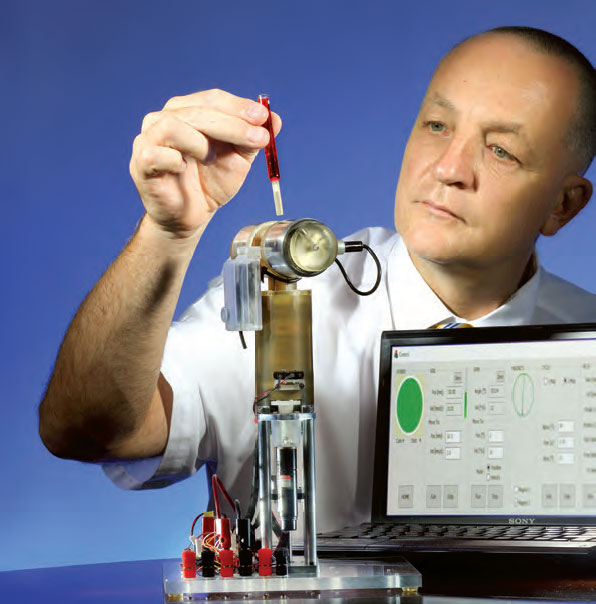Discovery Winter 2019
November 3, 2018

It’s a cellular version of “no man left behind.” Recovery of CTCs is 100 percent.
Trust Dan Stoianovici, Ph.D., Director of the Urology Robotics Program, to come up with a brilliant mechanical solution to a perplexing liquid conundrum: how to extract circulating tumor cells (CTCs) from the blood. “We have gotten very interested in being able to measure CTCs as diagnostic, prognostic, and predictive biomarkers in many types of cancer, including prostate,” says Ken Pienta, M.D., The Donald S. Coffey Professor of Urology. “But this has long been easier said than done. Previous methods to isolate and analyze CTCs require multiple steps, and many of these rare cells get lost in the process; recovery rates are usually less than 80 percent.”
Then Stoianovici – who has created many novel devices and is the reason why the Brady’s Urology Robotics Program is world-renowned – decided to take a crack at it. With funding from The Patrick C. Walsh Prostate Cancer Research Fund, and with colleagues Gonzalo Torga, Doru Petrisor, Michael Gorin, and Pienta, he developed a novel device with “computer- controlled magnetophoretic CTC-antibody binding and direct extraction.” Basically, using specially engineered antibodies that magnetically bind to the CTCs, Stoianovici figured out how to get them to stick to a glass slide, which a pathologist can then study under the microscope. Even better: “the CTC recovery is total.” With this technique, it’s a cellular version of “no man left behind.” Recovery is 100 percent.
In early experiments using different cell concentrations, the device performed like a champ. The scientists say that more testing is needed before this can be adapted for wider use.
